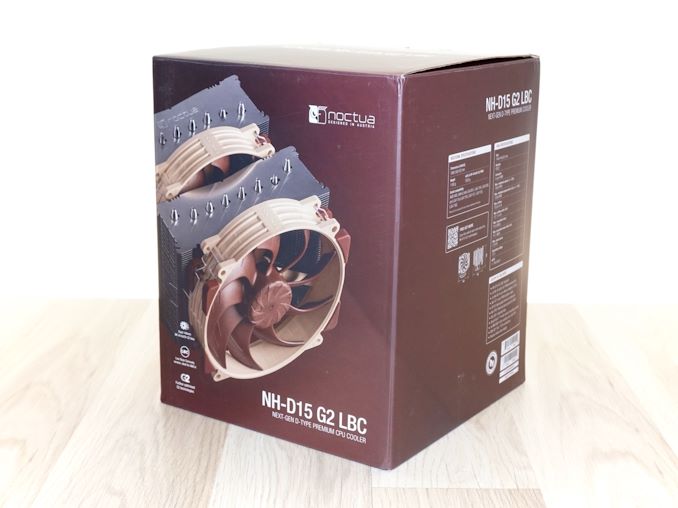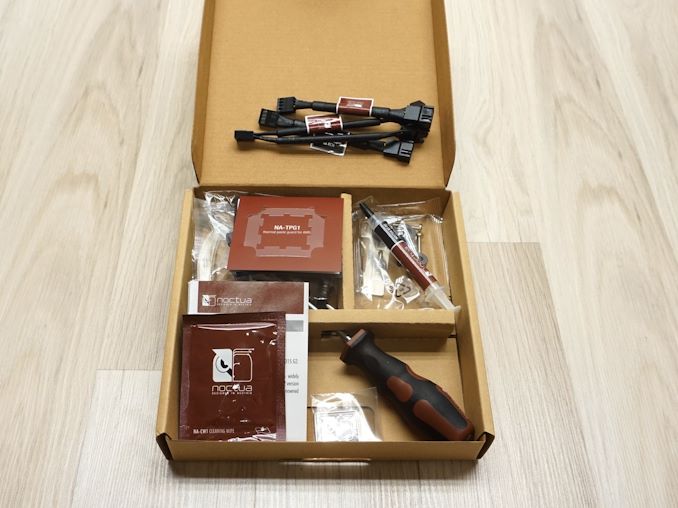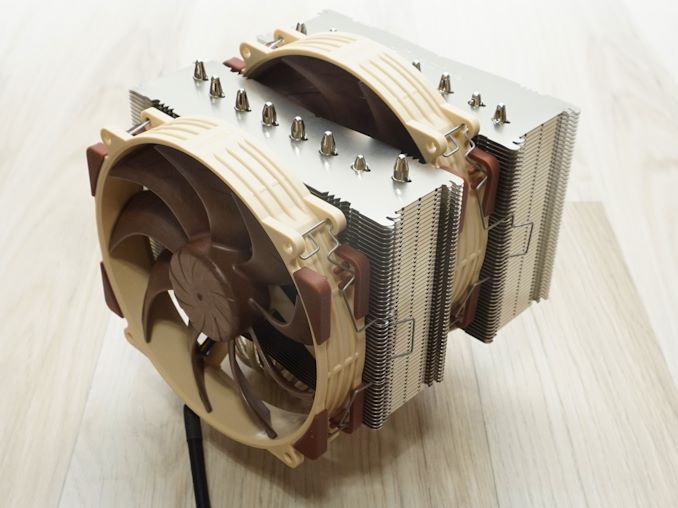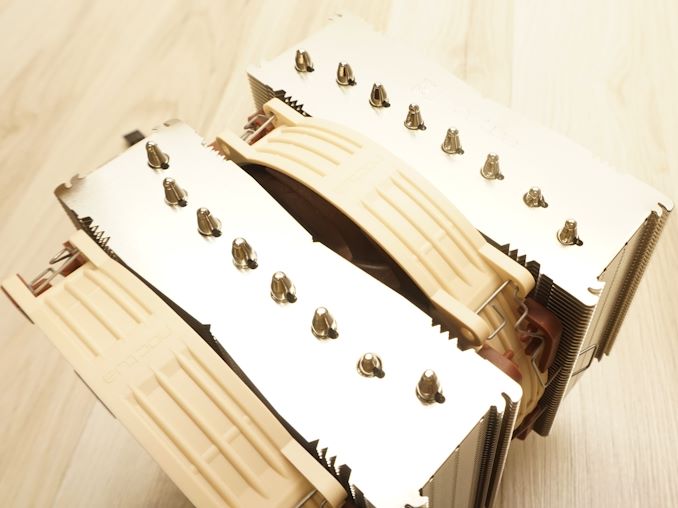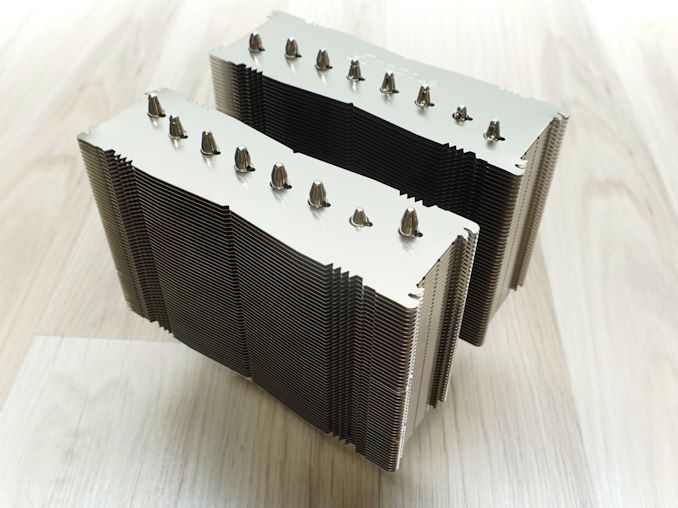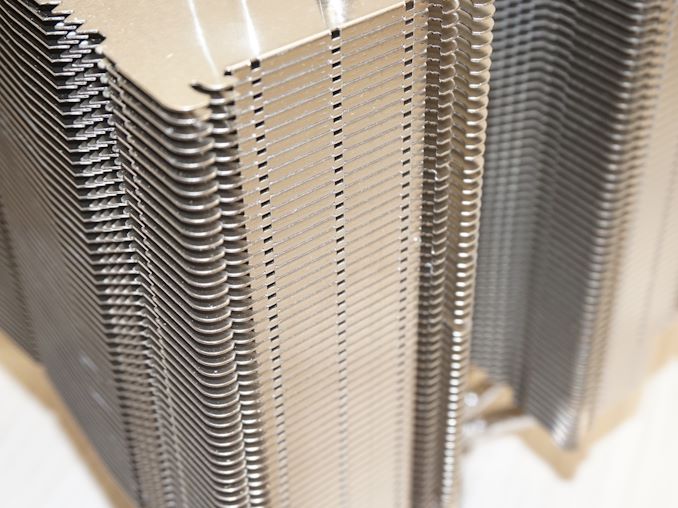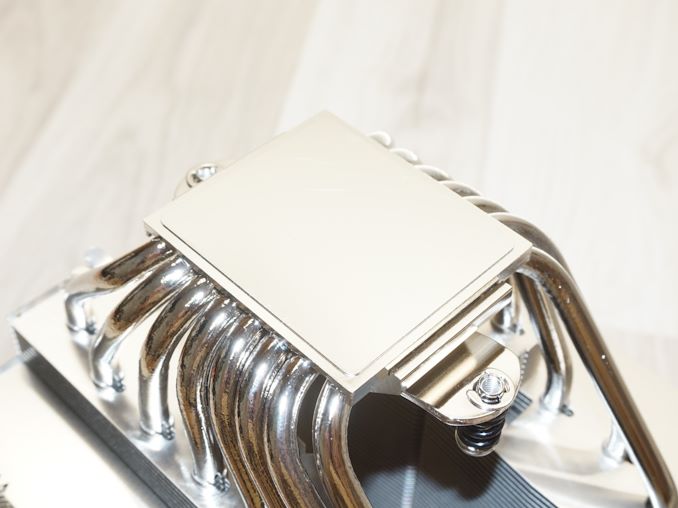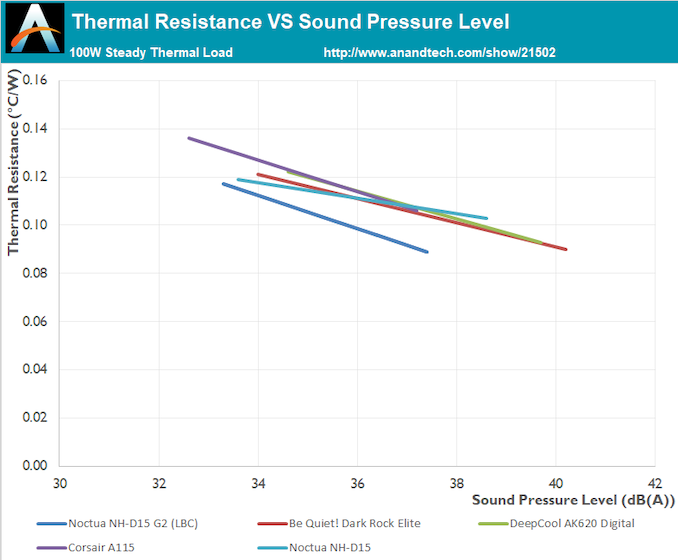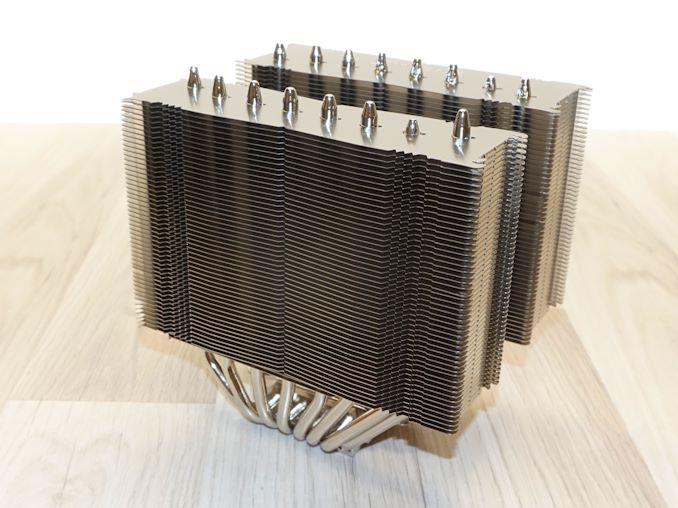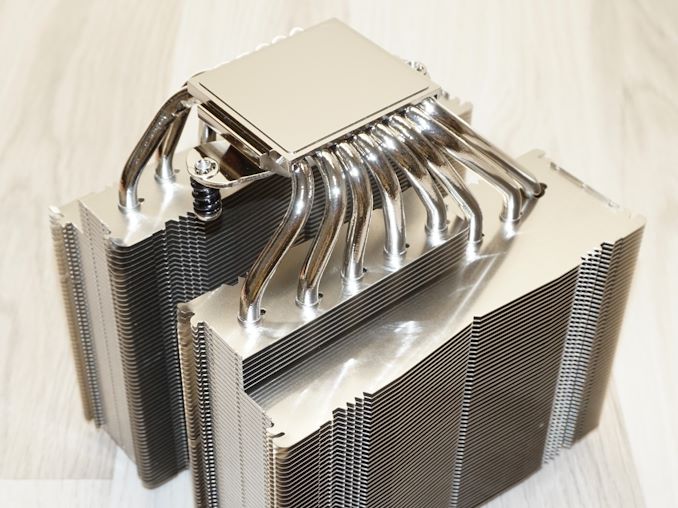
Original Link: https://www.anandtech.com/show/21502/the-noctua-nhd15-g2-lbc-cooler-review
The Noctua NH-D15 G2 LBC Cooler Review: Notoriously Big, Incredibly Good
by E. Fylladitakis on August 12, 2024 12:00 PM EST- Posted in
- Cases/Cooling/PSUs
- Noctua
- Cooler
- Air Cooling
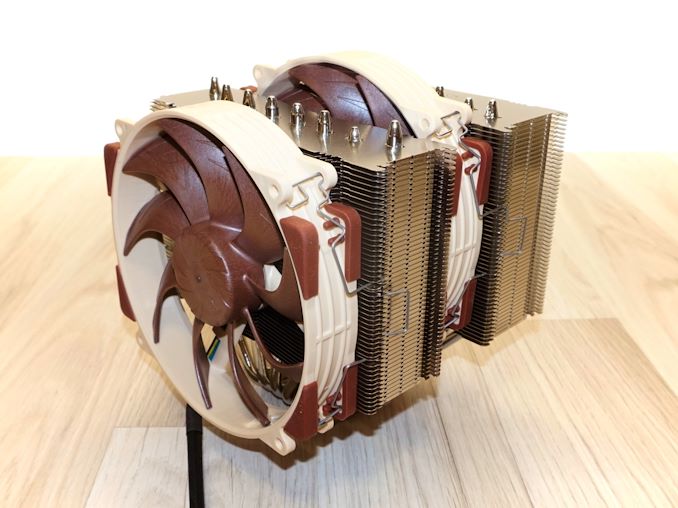
When you buy a retail computer CPU, it usually comes with a standard cooler. However, most enthusiasts find that the stock cooler just does not cut it in terms of performance. So, they often end up getting a more advanced cooler that better suits their needs. Choosing the right cooler isn't a one-size-fits-all deal – it is a bit of a journey. You have to consider what you need, what you want, your budget, and how much space you have in your setup. All these factors come into play when picking out the perfect cooler.
When it comes to high-performance coolers, Noctua is a name that frequently comes up among enthusiasts. Known for their exceptional build quality and superb cooling performance, Noctua coolers have been a favorite in the PC building community for years. A typical Noctua cooler will be punctuated by incredibly quiet fans and top-notch cooling efficiency overall, which has made them ideal for overclockers and builders who want to keep their systems running cool and quiet.
In this review, we'll be taking a closer look at the NH-D15 G2 cooler, the successor to the legendary NH-D15. This cooler comes with a hefty price tag of $150 but promises to deliver the best performance that an air cooler can currently achieve. The NH-D15 G2 is available in three versions: one standard version as well as two specialized variants – LBC (Low Base Convexity) and HBC (High Base Convexity). These variants are designed to make better contact with specific CPUs; the LBC is recommended for AMD AM5 processors, while the HBC is tailored for Intel LGA1700 processors, mirroring the slightly different geometry of their respective heatspeaders. Conversely, the standard version is an “one size fits all” approach for users who care more about long-term compatibility over squeezing out every ounce of potential the cooler has.
For this review, we're looking at the LBC version, as our solid copper testing station has no convexity, ensuring optimal performance evaluation.
| Noctua NH-D15 G2 CPU Cooler Specifications |
|||
| Type | Air Cooler (Dual Tower) | ||
| Dimensions | 168 x 150 x 127 mm (H x W x D) 1525 gr |
||
| Fans | 2 x 140 mm SSO2 Bearing Fans 1525/1475 RPM (max) |
||
| RGB | No | ||
| Supported Sockets | Intel: LGA1851, LGA1700, LGA1200, LGA115x AMD: AM5 / AM4 |
||
| Warranty | 6 Years | ||
| Price | $150 | ||
Packaging & Bundle
We received the NH-D15 G2 in a remarkably sturdy cardboard box. Noctua continues their tradition of using elegant, information-focused artwork on the packaging of all their products, opting for simplicity over flashy design. Their entire packaging is made of recyclable cardboard, with the sole exception being the small plastic shield of the cooler’s base.
Inside the box, the cooler was securely nestled beneath multiple layers of thick cardboard, ensuring excellent protection. The mounting hardware and additional accessories were neatly organized in a smaller, compartmentalized box within the main package. We should note that there isn't any mounting hardware for Threadripper or LGA20XX processors in the packaging, probably because Noctua offers specialized solutions for these processors.
Alongside the usual mounting hardware required to install the NH-D15 G2 onto a CPU socket, Noctua includes several additional accessories. Inside the box, you'll find a Torx screwdriver, a fan power splitter cable, two "low noise" adapters to limit fan speed, a tube of NT-H2 thermal grease, a thermal paste wipe, and a metallic case badge.
The Noctua NH-D15 G2 CPU Cooler
Noctua designed the NH-D15 G2 as their pinnacle air cooler, aimed at achieving the highest possible performance while adhering to the company's minimalist and elegant design ethos, with no unnecessary decorations.
Physically, the NH-D15 G2 is a massive – though relatively simple – CPU cooler. Fully assembled, it weighs over 1.5 kg, and that's despite the heavy use of lightweight aluminum.
Design-wise, Noctua has stuck with a classic dual-tower design, with the array of fins floating above a small base and relying on heatpipes to transfer thermal energy away from that base to the main body of the cooler. This cooler features optimized asymmetrical fin stacks and an improved fan arrangement that allows for a reduced fin spacing from 1.9mm to 1.6mm. This adjustment enabled the integration of 23 extra fins, increasing the total fin surface area by 20% compared to the NH-D15. We should note that the thinner fins also are a bit flimsier and can be easily damaged if mishandled.
Compared to the original NH-D15, Noctua increased the number of heatpipes from six to eight. The heatpipes are made of copper but are nickel-plated for durability and aesthetics. The joints between the heatpipes and the fins are all soldered, ensuring maximum thermal transfer and mechanical cohesion.
Despite these insertions, the NH-D15 G2 is slightly smaller than its predecessor. The thick fin array and the presence of two fans make the cooler wide, but Noctua has ensured that it stays clear of the PCI Express slots on a typical (m)ATX motherboard. However, it may partially block some RAM slots, limiting RAM height on these slots to 32 mm when both fans are installed (standard RAM height).
Noctua’s engineers optimized airflow and acoustics by using two 140 mm fans instead of one. The fans used are the company’s own designs with SSO2 engines (a combination of fluid dynamic bearing with a magnetic levitation technique). Interestingly, the two fans are actually slightly different, as each has its own speed rating (1475 RPM & 1525 RPM). According to the company, by slightly offsetting the fan speeds by approximately 25 RPM, it minimizes undesirable harmonic effects like periodic humming or intermittent vibrations. This technique supposedly ensures smoother acoustic performance without compromising cooling efficiency. Users can further adjust the offset using PWM control or low-noise adapters for personalized acoustics.
The base of the cooler that makes contact with the processor is split into two parts. The bottom half is made of nickel-plated copper, maximizing the heat transfer rate from the CPU to the heatpipes. It is extremely well-machined and smooth. As we've previously noted, just how convex the base is will depend on the version of the cooler – our LBC version appears to be perfectly flat, while the regular and HBC versions would be increasingly convex. The top metal brace serves only as mechanical support.
Testing Methodology
Although the testing of a cooler appears to be a simple task, that could not be much further from the truth. Proper thermal testing cannot be performed with a cooler mounted on a single chip, for multiple reasons. Some of these reasons include the instability of the thermal load and the inability to fully control and or monitor it, as well as the inaccuracy of the chip-integrated sensors. It is also impossible to compare results taken on different chips, let alone entirely different systems, which is a great problem when testing computer coolers, as the hardware changes every several months. Finally, testing a cooler on a typical system prevents the tester from assessing the most vital characteristic of a cooler, its absolute thermal resistance.
The absolute thermal resistance defines the absolute performance of a heatsink by indicating the temperature rise per unit of power, in our case in degrees Celsius per Watt (°C/W). In layman's terms, if the thermal resistance of a heatsink is known, the user can assess the highest possible temperature rise of a chip over ambient by simply multiplying the maximum thermal design power (TDP) rating of the chip with it. Extracting the absolute thermal resistance of a cooler however is no simple task, as the load has to be perfectly even, steady and variable, as the thermal resistance also varies depending on the magnitude of the thermal load. Therefore, even if it would be possible to assess the thermal resistance of a cooler while it is mounted on a working chip, it would not suffice, as a large change of the thermal load can yield much different results.
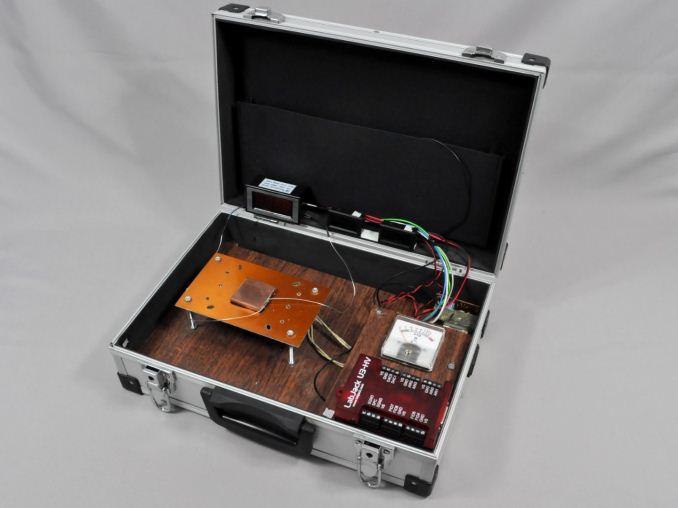
Appropriate thermal testing requires the creation of a proper testing station and the use of laboratory-grade equipment. Therefore, we created a thermal testing platform with a fully controllable thermal energy source that may be used to test any kind of cooler, regardless of its design and or compatibility. The thermal cartridge inside the core of our testing station can have its power adjusted between 60 W and 340 W, in 2 W increments (and it never throttles). Furthermore, monitoring and logging of the testing process via software minimizes the possibility of human errors during testing. A multifunction data acquisition module (DAQ) is responsible for the automatic or the manual control of the testing equipment, the acquisition of the ambient and the in-core temperatures via PT100 sensors, the logging of the test results and the mathematical extraction of performance figures.
Finally, as noise measurements are a bit tricky, their measurement is being performed manually. Fans can have significant variations in speed from their rated values, thus their actual speed during the thermal testing is being recorded via a laser tachometer. The fans (and pumps, when applicable) are being powered via an adjustable, fanless desktop DC power supply and noise measurements are being taken 1 meter away from the cooler, in a straight line ahead from its fan engine. At this point we should also note that the Decibel scale is logarithmic, which means that roughly every 3 dB(A) the sound pressure doubles. Therefore, the difference of sound pressure between 30 dB(A) and 60 dB(A) is not "twice as much" but nearly a thousand times greater. The table below should help you cross-reference our test results with real-life situations.
The noise floor of our recording equipment is 30.2-30.4 dB(A), which represents a medium-sized room without any active noise sources. All of our acoustic testing takes place during night hours, minimizing the possibility of external disruptions.
| <35dB(A) | Virtually inaudible |
| 35-38dB(A) | Very quiet (whisper-slight humming) |
| 38-40dB(A) | Quiet (relatively comfortable - humming) |
| 40-44dB(A) | Normal (humming noise, above comfortable for a large % of users) |
| 44-47dB(A)* | Loud* (strong aerodynamic noise) |
| 47-50dB(A) | Very loud (strong whining noise) |
| 50-54dB(A) | Extremely loud (painfully distracting for the vast majority of users) |
| >54dB(A) | Intolerable for home/office use, special applications only. |
*noise levels above this are not suggested for daily use
Testing Results, Maximum Fan Speed
Starting things off, let's take a look at the NH-D15 G2 LBC performance with the fans at their full speed (12 V). The speed on our charts is the one of the slightly faster fan, with the secondary fan running at about 50 RPM less.

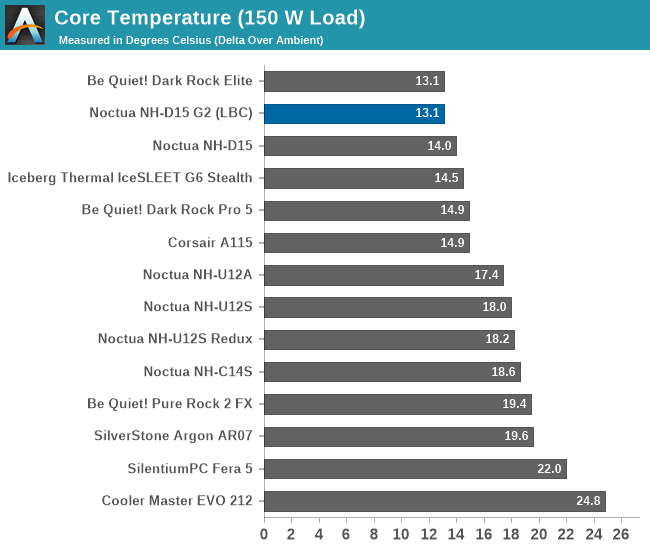
| Core Temperature, Constant Thermal Load (Max Fan Speed) |
When the fans of the Noctua NH-D15 G2 run at maximum speed, the cooler shows outstanding performance, with an average thermal resistance of just 0.0849 °C/W. This makes it slightly better than the original NH-D15 and grants it the lowest thermal resistance of any air cooler we've tested to date. Impressively, its thermal resistance is comparable to that of many dual-fan liquid coolers. There are a few other implementations that do get very close in terms of raw thermal performance but their noise output is measurably higher.
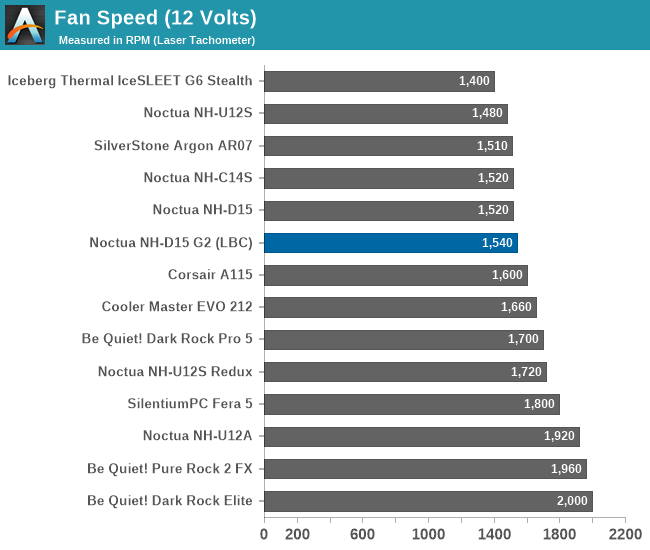
Noctua's fan speed offset tweak also seems effective, as the noise output of the NH-D15 G2 is meaningfully reduced compared to the first generation. This reduction occurs despite minimal differences in fan technology or speed between the two versions, suggesting that the tweak has shifted some of the cooler's noise to the lower frequency, less perceptible parts of the audio spectrum (as interpreted by A-weighting). Alternatively, it may be a sign that Noctua has reduced the number and/or magnitude of sound waves reflecting through the cooler.

Testing Results, Low Fan Speed
Using a PWM voltage regulator, we reduced the speed of the fans manually down to 950 RPM for the primary fan and 900 RPM for the second fan.
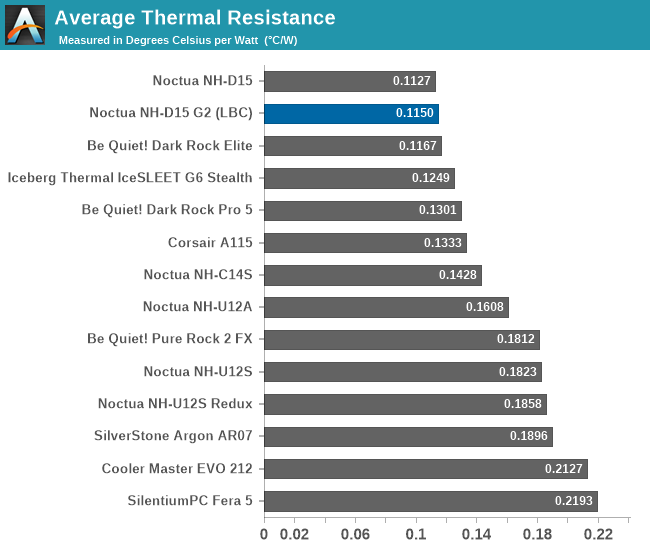
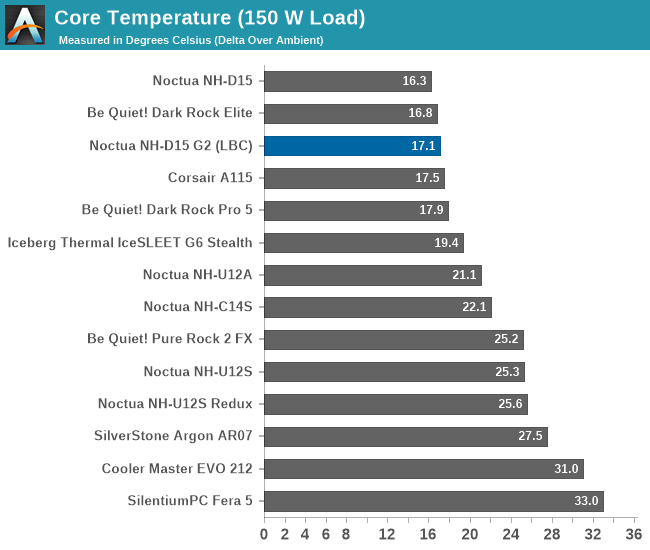
| Core Temperature, Constant Thermal Load (Low Fan Speed) |
When its fans are running at 950 RPM, the Noctua NH-D15 G2's thermal performance sees a slight decline compared to the first-generation NH-D15, with an average thermal resistance of 0.115 °C/W. Despite this minor dip in cooling efficiency, the NH-D15 G2 still delivers exceptional thermal performance, rivaling many top-tier air coolers.
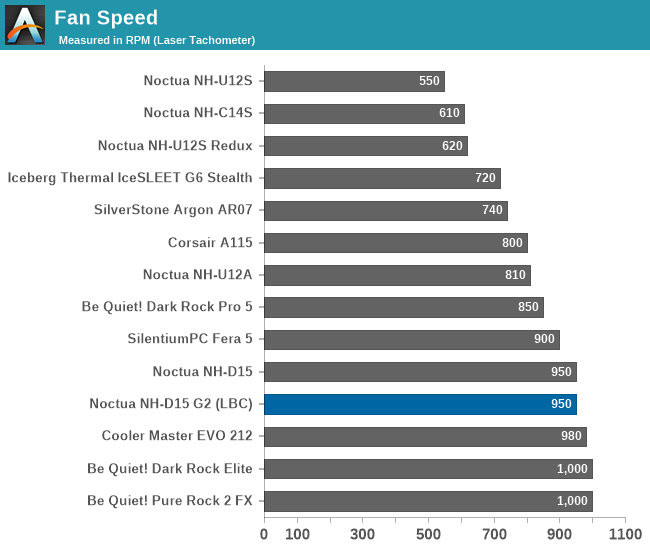
The slight reduction is offset by a significant drop in noise output, producing only 33.3 dB(A) and making it quieter than its predecessor. The NH-D15 G2 is also quieter than any other dual-tower air cooler that can even come close to it in terms of thermal performance, with only Be Quiet!’s Dark Rock Elite holding its ground against it.
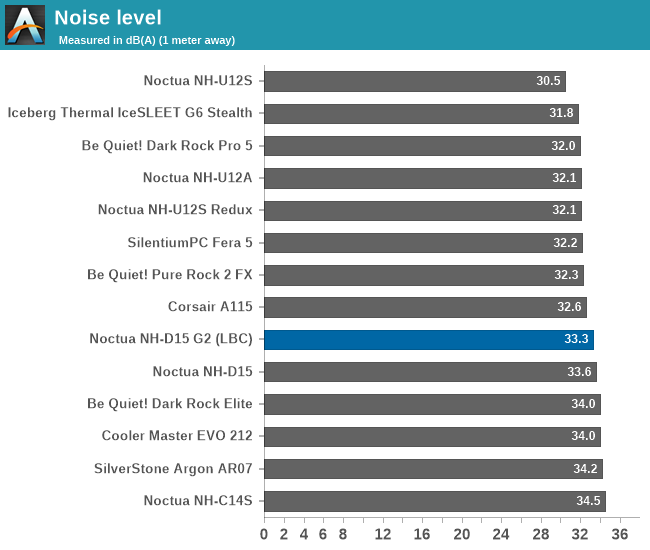
Thermal Resistance VS Sound Pressure Level
During our thermal resistance vs. sound pressure level test, we maintain a steady 100W thermal load and assess the overall performance of the coolers by taking multiple temperature and sound pressure level readings within the operating range of the stock cooling fans. The result is a graph that depicts the absolute thermal resistance of the cooler in comparison to the noise generated. For both the sound pressure level and absolute thermal resistance readings, lower figures are better.
This chart reveals where the Noctua NH-D15 G2 stands when thermal performance is directly tied to noise output, with the cooler clearly leading the chart. It also reveals that the new version is significantly upgraded over the now aged NH-D15 – the NH-D15 does provide similar thermal performance when the fan speeds are low but the performance of the NH-D15 G2 significantly improves when the fan speeds increase. Albeit the differences are not major, no other air cooler manages to cross their lines with Noctua’s NH-D15 G2. Those that do reach the same figures of thermal resistance, they do so at significantly higher sound pressure levels.
Conclusion
The Noctua NH-D15 G2 exemplifies premium build quality, showcasing Noctua's commitment to excellence. Compared to the first generation NH-D15, Noctua has been able to increase the number of heatpipes by two and also increased the fin surface area – all without increasing the cooler’s volume – highlighting thoughtful engineering aimed at maximizing cooling efficiency. Every single fin is soldered on the nickel-plated heatpipes for maximum mechanical cohesion and reliable heat transfer. However, the thinner, more numerous fins can be fragile, requiring more careful than usual handling to avoid damage. Overall, the build quality is impressive, blending functionality with Noctua's traditional elegant, minimalist aesthetic.
In terms of thermal performance, the NH-D15 G2 stands out as the best air cooler currently available. At its maximum fan speed, it achieves an average thermal resistance of 0.0849 °C/W, surpassing the original NH-D15 and rivaling many dual-fan liquid coolers. Even at inaudible fan speeds, with the performance dip to 0.115 °C/W, it maintains exceptional cooling capabilities. This cooler is particularly suited for high-performance systems, offering remarkable efficiency and reliability, even under substantial thermal loads.
The acoustic performance of the NH-D15 G2 is equally noteworthy. Noctua's fan speed offset technique seems to be effective at reducing noise levels, with the cooler operating at a slightly quieter profile than its predecessor. At full speed, the noise output is 38.8 dB(A), which decreases to 33.3 dB(A) at half speed. Running the fans higher does lower the thermal resistance of the cooler measurably, allowing it to dissipate higher volumes of thermal energy efficiently, making the NH-D15 G2 highly suitable for high-wattage applications. The balance between cooling performance and noise levels is ideal for users seeking both power and quiet operation, allowing their systems to be quiet most of the time but with a cooling solution capable to handle massive thermal loads if need be.
We should also note that while there have been reports of vibration "rattling" noises coming from some early samples of the cooler, we did not encounter this issue with our test sample under any testing conditions.
At a retail price of $150, the Noctua NH-D15 G2 is undeniably a significant investment. Noctua set out to build a halo product, and this is exactly what they've accomplished; putting together a chart-topping cooler with a superior build quality, thermal performance, and acoustic refinement.
Suffice it to say, this is not the product we would recommend to everyone – only builders with very powerful and/or overclocked processors are going to come close to needing it – but Noctua did not design the NH-D15 G2 for the masses anyway. For budget-minded builders there are far better options at half the price – and even the classic NH-D15 is still a darn good cooler for $40 less – but none of those will match the NH-D15 G2. This is a halo product, one that is unrivaled in cooling performance while giving Noctua the right to claim that they have the best performing CPU air cooler available today.

